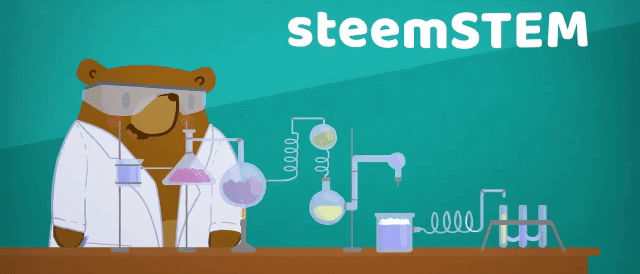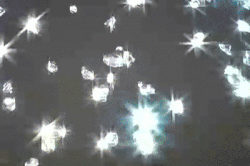The Space Booze of The G34.3 Gas Cloud and The Planet where it Rains Diamonds
It is the weekend, and you guys already know what goes down in most places for adults 18 and above when they go to their favourite hangouts. There is no need to think about the answer so much as I will give it out willingly. They take loads of alcohol which may make Mondays the longest day of the week.

[Imgur]Source:G34.3 Gas Cloud
But those guys on the hangouts are earthlings who only get to check out the precious liquid on the weekend or after work. Even then the liquid is not readily available. If you love your alcohol so much, the next place I am about to mention may be worthy of a visit. Well, the area is in the clouds, an interstellar gas clouds. This interstellar gas cloud is also known as nebulae.
These gas clouds together with the interstellar dust, molecular clouds, and intercloud medium, make up the interstellar medium which is star-forming plasma and dust. In enough quantity and the right proportion, these blends together to form a new star.
The 21st-century technology instruments such as the Hubble Telescope allows astrophysicists a glimpse into how these stars are born.
Today, our focus would be on the gas cloud known as G34.3. It was discovered in 1995. The G34.3 is near the constellation Aquila.
A constellation, by the way, is an imaginary shape made by a group of stars in the sky at night. There are 88 officially recognised constellations according to the NASA.
The closest star to the earth is the Alpha Centauri C. It is located at a distance of 4.234 light years from the Earth. The constellation where it is located is called the Centaurus.
The G34.3 gas cloud is 10,000 light-years away from the Earth and has a diameter that is 1,000 times that of our solar system. That is not the exciting thing about this star-forming cloud. There is the presence of ethyl alcohol on it. That was not the first time alcohol was detected in our celestial body. In 1975, Dr Ben M. Zuckerman, an astronomer from the University of California discovered the first booze cloud.
In 1995 a team of British scientists led by Dr Lisa Harvey-Smith collaborated this discovery.
The amount of this alcohol is so massive that it could supply 400 trillion pints of beer! The methyl alcohol cloud spans an estimated 288 billion miles of floating space. That can provide 300,000 pints of beer every day for the world's population for the next couple of billion years. I'd drink to that.
Let us and go and have a celestial beer fest. No so fast! Apart from being a little bit far, the lead investigator, Dr Harvey Smith has some more bad news.
“Although it is exciting to discover a cloud of alcohol almost 300 billion miles across, unfortunately, methanol, unlike its chemical cousin ethanol, is not suitable for human consumption!”Labnews UK
The beer is unfit for drinking as it is also mixed with some chemicals such as carbon dioxide, ammonia, hydrogen cyanide, and other harmful substances.
It is not just about the discovery of alcohol as the astronomers hope to learn more about the formation of stars in our galaxy by any new information that is uncovered about it.
Observing this formation using UK's MERLIN radio telescopes, the massive masers, the cloud of gas emits microwave radiation, similarly, as a laser does, were thought before to be point-like objects which are circumscribed by faint emissions.
But a recent upgrade on the MERLIN made it possible to get images with more sensitivity, hence the discovery of the methanol masers or the "booze" cloud.
Now, better theories of how stars are born can now be put to practice. A thought echoed by Dr Harvey-Smith.
“There are still many unanswered questions about the birth of massive stars because the formation centres are shrouded by dust. The only radiation that can escape is at radio wavelengths and the upgraded MERLIN network is now giving us the first opportunity to look deep into these star forming regions and see what’s really going on.“ Source
When it Rains, It Rains Diamonds
Some make it rain dollars or any other type of currencies, and they are often regarded as rich people. They may need to take a step back as we have a place where when it rains, it rains diamonds.
Just take a flight to Neptune, it is only 2.7 million miles from the earth. The spacecraft, Voyager 2, took only 12 years to get there (Aug 20, 1977, to Aug 24, 1989) travelling at 19km/s (42,000 miles per hour).
Anyway, the voyager is still up there in space.
A Blue Planet
One striking thing about Neptune and Uranus is that they are blue.
This colour is due to its high concentration of methane as well as the helium and hydrogen.
The astrophysicist believes when lighting strikes the clouds of methane (CH4), the chemical bonds holding it together breaks freeing carbon atoms.
The now freed atoms mix with soot in the cloud and sank lower in the atmosphere. At the lower atmosphere, the pressure and temperatures rise. This continuous high temperature and pressure force the carbon atoms to form a solid diamond.
There is the perfect recipe for a diamond rain.Neptune and Uranus do not have the exclusive right to diamonds as Saturn and Jupiter have some methane gas too, just that Uranus and Neptune have more. The quantity is so much that there is even an ocean of diamond on Neptune.
Most of these are theories, but scientists have tried to recreate the condition in Neptune to make it rain diamonds here too. They did it using an instrument called Matter in Extreme Conditions (MEC).
They recreated Neptune and Uranus atmospheres using Xray lasers on plastics to produce the carbon and hydrogen atoms.
The laser blasts forced carbon atoms out of the plastic, and it fused to form microscopic diamonds. These only lasted for a nanosecond. But hey, the scientist have their proof of a diamond rain.
The nanodiamonds have use case in medicine and industrial applications.
Thanks a lot for reading.
References
Hot Ethanol G34.3
British Scientist Discovery
Atmopsheric Chemistry of the Gas Planets
Scientists Creates "Diamond Rain" in Lab
Image References
If you write STEM (Science, Technology, Engineering, and Mathematics) related posts, consider joining #steemSTEM on steemit chat or discord here. If you are from Nigeria, you may want to include the #stemng tag in your post. You can visit this blog by @stemng for more details. You can also check this blog post by @steemstem here and this guidelines here for help on how to be a member of @steemstem.




Diamonds?? This world is really mysterious.. Just incase it decides to rain diamonds on earth, it should start from my house, lol.. Thanks for this enlightenment.
Who wouldn't want a rain of the most precious metal? I know I would :)
Thank you.
@greenrun if I say the oyingbo and grammar in this post wasn't hard on me to Decode then I'm deceiving myself.
The beautiful G34. 3 gas cloud that is 300 billion miles from the earth containing alcohol that can cater for beer drinkers all over the world is a beautiful discovery.👊
I'd add more images next time. Thought I've added enough.
Lolz😃.
I prefer visuals to picture on stuff like this 👌
Nice to read this post and thanks for sharing it, so many people may not understand the scientific grammar.
So many people think that beer is on saver side than alcohol, even for me, I think beer is still more preferable than alcohol. But the true aspect of it is that both are harmful.
Thank you for dropping by.
Diamond rain you say? Am going outta space soon
Get your bag then.
Can we go together?
This is so insightful. I was already fantasizing about the whole "beer-parlor climate" till I saw cyanide, menthol and the rest. 😢😢
Well, I can understand that :)
what a great discovery but it unfortunately it's unfit for human consumption
Even if it's fit for drinking it's still 10,000 light years out.
Understanding the planetary system better...
This got me celestial beer unfit for human to drink, definitely it for celestial being
You got the gist :)
It's an awful discovery and wonderful sharing. I am amazed to such huge quantities of alcohol which are beyond measurement. It's indeed a very informative blog with so much fascinating pints of alcohol.:)
Makes Saturday hangout appear dull :)
@abdulhanan you must love beer😁
Lolz😄😄😃
Lols...
What can I say? I'm amazed. Stellar bodies contain alcohol,neptune and Uranus is blue, there is also diamond rain
What an educative post. Keep up the good work greenrun
Thank you.
Well it would have been great to see diamonds falling from the sky instead of rain ;)
The information are quite amazing buddy ,didn't know that !
I'd love a diamond rain too :)
Fall of diamond could only happen on sci-fi.
Lolz😄
@rehan12 if diamonds really fall!
Jeez it would have erased the financial incapacitation of many all over the world👌
@greenrun we sure will have a lots of fun if that kind of situation happens ;)
@udezee yeah buddy ,i wonder and can actually imagine how the scenario would be ;)